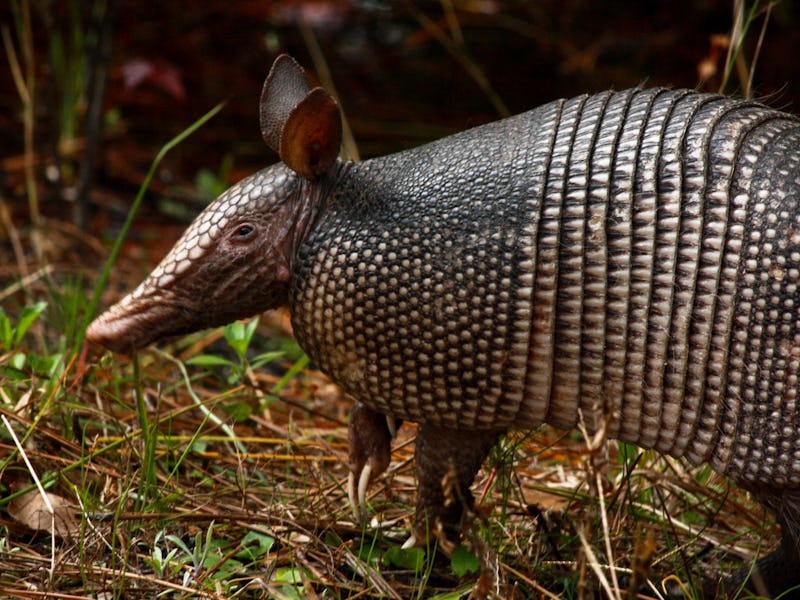Texas Man Demonstrates What Happens When You Shoot an Armadillo
Just don't.

After discovering an armadillo in his garden in late July, an East Texas man fired three shots at the armored insectivore, but one of the bullets deflected off the creature’s shell and struck him in the face.
Emergency responders wired the victim’s jaw shut and airlifted him to a Texarkana hospital. The armadillo, however, could not be found, and it’s not clear what sort of damage it sustained after the attack. Though the animals have a reputation for being indestructible, scientists actually don’t know what function their shells serve, and as such, it’s not obvious how much force they can withstand. Researchers don’t know whether armadillo scales evolved to defend them from predators or function as protection against constant abrasion as they burrow into the ground in search of protein-rich bugs.
Still, the Texas creature’s rigid coat thwarted at least one bullet from entering the soft, pig-like body underneath.
The armadillo's many scales confer it with mobility that more uniform turtle shells don't have.
It managed to do so because an armadillo’s shell is similar to a turtle’s, in which a rigid “dermal bone” forms from the inner layers of the creature’s skin. But unlike the shells of turtles, armadillo shells have hundreds of individual scales that allow the animals an impressive amount of mobility. Although the rigid scales cover almost their entire bodies, they can contort themselves to burrow into the ground and are considered pretty good swimmers.
A bullet from a .38 revolver lost its battle with an armadillo. It's unknown if the other two bullets penetrated the creature's scales.
But that’s the extent of what scientists know. Mammalian researchers have noticed a dearth of armadillo studies in the literature, which is why they can’t confirm why the animals were evolutionarily conferred hard, protective shells.
In a 2011 study published in the Journal of Mammalian Evolution, armadillo researchers note that it might seem like “obvious” and “conventional wisdom” that the shell is designed to guard the animals from the claws and teeth of predators. However, they point out, armadillos spend their days digging in the ground surrounded by thorns, and they are known to have migrated into Texas from the prickly Mexican desert a century ago. The animals, which are thought to have descended from giant, prehistoric foragers called glyptodonts, munch on beetles and worms while scavenging in the dirt, so they often have little choice but to wander among dense brush that could constantly stab at their skin.
Their hardy coats, then, might not have much to do with predation, as there is no data that shows armadillos get eaten less than their similarly-sized and non-armored counterparts.
For those outside Texas, it might seem cruel or nonsensical to kill a diminutive bug-eater, but in many parts of the state, armadillos are so common, they’re considered pests. It’s likely this East Texas man was displeased to find an armadillo digging up plants in his manicured garden and sought to eliminate the pestilence.
The plan, however, backfired.